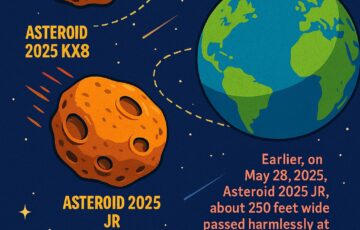Soviet-Era Kosmos 482 Crashes into Ocean
Soviet-Era Kosmos 482 Crashes into Ocean
Why in the News ?
A fragment of the Soviet Kosmos 482 spacecraft, launched in 1972 to explore Venus, crashed into the Indian Ocean near Indonesia after 53 years in orbit due to a rocket malfunction. No injuries or damage were reported.
Highlights of the Mission Failure and Long-Term Orbit:
- Due to a rocket stage malfunction (timer error), Kosmos 482 failed to leave Earth orbit.
- The lander module separated but remained trapped in low-Earth orbit for over five decades.
- While most parts reentered Earth within 10 years, the 495-kg titanium lander stayed in orbit due to its durable structure.
- Eventually, atmospheric drag caused its descent, leading to the recent crash.
Crash Impact and Broader Context
- The uncontrolled re-entry prevented accurate predictions of the crash site.
- The lander, made of titanium, withstood high temperatures and splashed down at around 242 kmph.
- The crash is not unusual; over 2,400 objects fell to Earth in 2022
- According to the European Space Agency, the risk of injury from space debris remains extremely low — less than 1 in 100 billion.
About the Kosmos 482 Mission and Objectives:● Kosmos 482, launched on March 31, 1972, was part of the Venera Program by the Soviet Union. ● Aimed at exploring Venus, it carried instruments to measure temperature, pressure, wind speed, and atmospheric gases. ● The twin mission Venera 8, launched days earlier, successfully landed on Venus after 117 days. ● The program marked several milestones including first atmospheric entry, first landing, and first sound recordings from another planet. |





